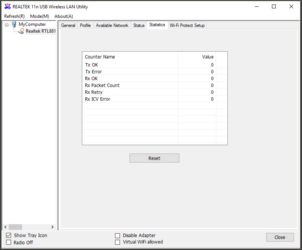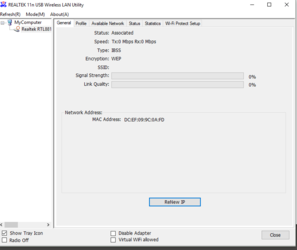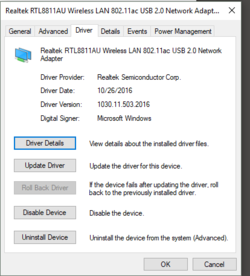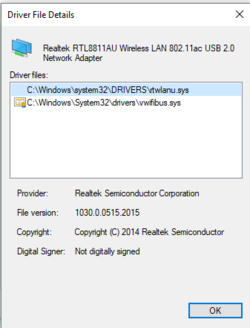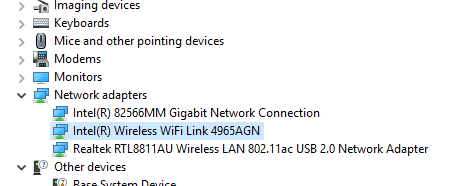I recently upgraded the machine (with some help from you all) with an SSD, fan, Middleton BIOS and clean Win10--now it's a great backup to my P50. However, while the machine has no problem connecting to the network and internet with Ethernet--turning on the radios switch and using WiFi, the machine will lose connection within a few hours at most.
The OEM is an Intel WiFi Link 4965AGN which Intel no longer supports. The OS reports no problem with the it.
Since the machine was shipped with Vista 32 bit and later upgraded to Win7 32 bit then Win7 64 bit I'm sure that when I did the hardware upgrade and installed Win10 that was a compatibility problem for the WiFi card.
I downloaded Intel's newest driver set (Intel® PROSet/Wireless Software and Drivers for Intel® Wireless WiFi Link 4965 Date: 17-Aug-2017 Version: Latest (Latest) OS: Windows 7, 32-bit*, Windows 7, 64-bit*, Windows Vista 32*) that does not support Win10. The problem remains.
Has anyone run into this situation?
Is there a driver written by another company that is also compatible with the Intel card and Win10?
Worst comes to worst I'll just use a cable connect with the T61 but I'd much rather ($ and difficulty permitting) prefer to have the WiFi back functioning.
Suggestions?
The OEM is an Intel WiFi Link 4965AGN which Intel no longer supports. The OS reports no problem with the it.
Since the machine was shipped with Vista 32 bit and later upgraded to Win7 32 bit then Win7 64 bit I'm sure that when I did the hardware upgrade and installed Win10 that was a compatibility problem for the WiFi card.
I downloaded Intel's newest driver set (Intel® PROSet/Wireless Software and Drivers for Intel® Wireless WiFi Link 4965 Date: 17-Aug-2017 Version: Latest (Latest) OS: Windows 7, 32-bit*, Windows 7, 64-bit*, Windows Vista 32*) that does not support Win10. The problem remains.
Has anyone run into this situation?
Is there a driver written by another company that is also compatible with the Intel card and Win10?
Worst comes to worst I'll just use a cable connect with the T61 but I'd much rather ($ and difficulty permitting) prefer to have the WiFi back functioning.
Suggestions?
